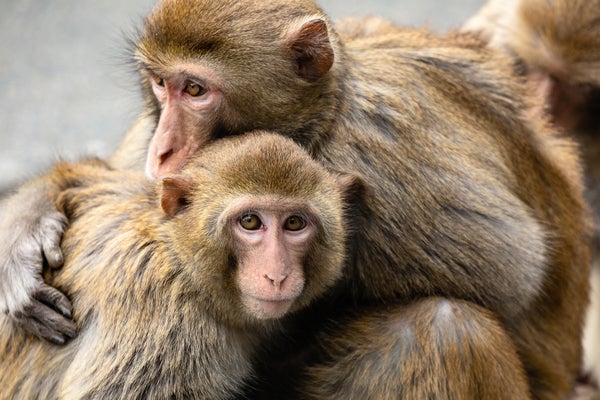A Study in Primates Reveals How the Brain Encodes Complex Social Interactions
The research tracks, at the level of individual neurons, what happens when a monkey hangs out with other monkeys. It even found a possible neural code for empathy
Zane Michael Cooper/Getty Images
Reciprocity—I scratch your back; you scratch mine—has long been thought to be one of the hallmarks of friendship and other close relationships. In the world of nonhuman primates, the back-scratching is literal. Monkeys take turns grooming one another as a form of hygiene and social bonding.
According to a striking new study, that turn taking is precisely calibrated over time. It’s a calculated reciprocity that tracks social investment using complex brain circuitry at the level of individual neurons across remarkably different parts of the brain. The paper, published in Nature on March 13, shows, for the first time, how social behavior is encoded in the brain while monkeys are engaged in everyday monkey business rather than narrow laboratory tasks. And it reveals similar brain processing that underpins other forms of social behavior, such as giving support. “Our findings reveal a highly distributed neurophysiological ledger of social dynamics, a potential computational foundation supporting communal life in primate societies, including our own,” the authors write.
Until recently, “all of the neuroscience in primates, including humans, has been done in highly restricted environments,” says co-lead author Camille Testard, who is now a postdoctoral fellow at Harvard University and will become a junior fellow there in July. By contrast, the new study, which was part of Testard’s Ph.D. thesis as a student of neuroscientist Michael Platt at the University of Pennsylvania, involved observing male-female pairs of rhesus macaques for two and a half hour stretches in their home enclosure in a laboratory in three different situations: the male alone, the male with…
Read the full article here







